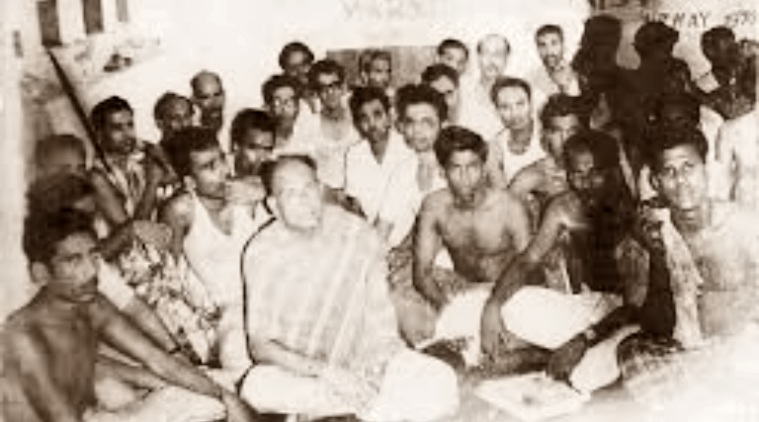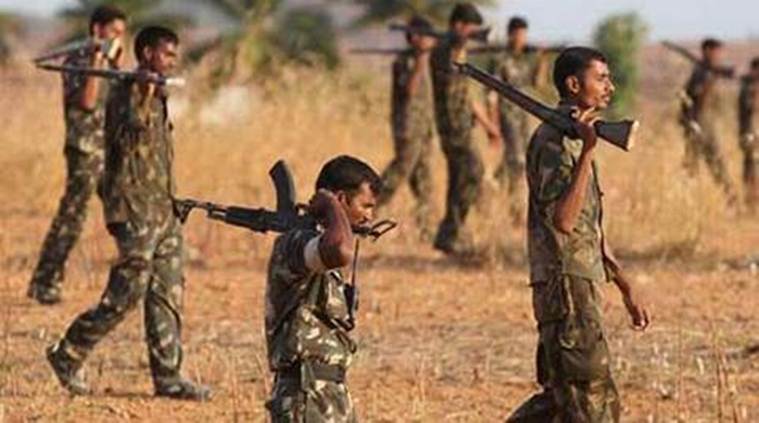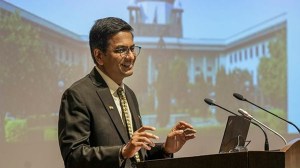- India
- International
Naxalbari: How a peasant uprising triggered a pan-India political movement
In the late sixties and early seventies, the Naxalbari uprising ignited a fire in the hearts of both the urban youth and the rural masses. Eventually, it would go on to determine the very nature of armed revolution in India.
 In the late sixties and early seventies, the Naxalbari uprising ignited a fire in the hearts of both the urban youth and the rural masses. (CPIML.org)
In the late sixties and early seventies, the Naxalbari uprising ignited a fire in the hearts of both the urban youth and the rural masses. (CPIML.org)
In the summer of 1967, a tiny village on the foothills of the Himalayas was making headlines. Located in the Darjeeling district in West Bengal, Naxalbari lit a fire that would spread across large parts of India and burn till today in the form of the Maoist movement. The peasants of Naxalbari, who mainly worked on tea plantations and at large estates, had for centuries been exploited by the landowning classes and the moneylenders. On March 25, 1967, when one of the sharecroppers in the village tried to till the land from which he had been illegally evicted, the landlord got him brutally beaten up and took away his belongings. Exasperated by the exploitation of the landlords, peasants across the village got together and rose in rebellion.
In the two years before 1967, the seeds of rebellion in Naxalbari were being nurtured by the cadres of the Communist Party of India (Marxist) (CPI-M). A splinter group from the Communist Party of India (CPI), the CPI-M was convinced that a real socialist revolution was possible only when the workers and peasants would launch an armed uprising against the moneyed classes. After the March 25 incident at Naxalbari, they were convinced that the moment had arrived. Charu Mazumdar, one of the leaders of the CPI-M, is believed to have held that “there was an excellent revolutionary situation in the country with all the classical symptoms”. On May 25 that year, he along with the two other key leaders, Kanu Sanyal and Jangal Santhal, launched the peasant uprising in Naxalbari. The movement was quick to face the wrath of the state government with the police dealing with protesters with an iron hand. Nonetheless, in the next few days, months and decades, the Naxalbari uprising would go on to determine the very nature of armed revolution in India.
 The Naxalbari uprising would go on to determine the very nature of armed revolution in India. (Express photo by Nandagopal Rajan)
The Naxalbari uprising would go on to determine the very nature of armed revolution in India. (Express photo by Nandagopal Rajan)
The movement in its current form has altered significantly, both in its nature and objectives. In the late sixties and early seventies, the Naxalbari uprising ignited a fire in the hearts of both the urban youth and the rural masses. In the next few months, similar movements became common in pockets of Bihar, Jharkhand and West Bengal, in parts of Odisha, all the way till Andhra Pradesh and Maharashtra. “For the first time in post-independence India the movement asserted the demands of the poor and landless peasantry in a way that shook the then atrophied Indian political scene,” writes historian Sumanta Banerjee. Also significant was the way the movement appealed to the urban youth, particularly students, from some of the most esteemed universities of the country, for whom the movement exemplified the precise way in which the establishment could be challenged.
Naxalbari and the restless urban India youth
“People are reacting. Naxalbari is an inspiration. It’s an impetus for change,” says Udayan, the fictionalised character of Jhumpa Lahiri in her book “The Lowland.” A student of Presidency University, Udayan’s euphoria at the outbreak of the uprising was evident in the way he challenged his family and joined a group of simmering revolutionary intelligentsia in supporting the Naxal cause. Lahiri’s protagonist set in the background of Calcutta in the 1960s is a reflection of a similar character set in Delhi in Sudhir Mishra’s “Hazaron Khwaishein Aisi”.
Mishra’s protagonist Siddharth Tyabji (played by Kay Kay Menon) was a student in Delhi University. A firebrand Naxalite of the seventies, he decides to leave his life of luxury to move to a village in Bihar in the hope of bringing revolution against the oppressive tendencies of upper caste landlords. Both the characters of Lahiri and Mishra are reflective of a generation of young people, affected beyond measure by the Naxal movement, despite being far removed from the site in which the uprising primarily took place.

 Presidency College in Calcutta became a hotbed for Naxalite activities. (Wikimedia Commons)
Presidency College in Calcutta became a hotbed for Naxalite activities. (Wikimedia Commons)
In the immediate aftermath of the Naxal uprising, the urban youth of India, several among them being from the privileged sections of society, were remarkably inspired to rise in revolution. Descendants of a generation that had seen Independence, for those in their twenties in the 1960s and 70s, Naxalbari was their moment of bringing change in the way in which their parents’ generation had risen against the colonial state. It was not uncommon to see posters of Naxalbari hanging across the walls of colleges in Calcutta and Delhi. Many students left college to join the Naxalites.
Charu Mazumdar took a number of steps as well to entice students into joining the Naxal movement. He declared that the revolution was not just for the rural masses but rather a fight against everyone who was a ‘class enemy’ which included University teachers, businessmen, police and, of course, the government. Naxalites took over Jadavpur University and Calcutta University. Presidency College in Calcutta and St. Stephens in Delhi became hotbeds for Naxalite activities.
The state, too, could not remain immune for long from the ‘disruptive’ activities of the students and went after them. Reportedly, it was at the house of Congress MLA Somen Mitra where students were held up illegally by the police and government officials. Till date, several upper-middle-class families belonging to these urban centres narrate tales of family members and friends who had to be flown outside the country, or somehow suppressed, in order to escape the wrath of the state.
Naxalbari and the agitating rural masses
The real achievement of the movement, however, lay in the way it shook up rural India. “It continues to arouse them to protest and take up arms against their feudal oppressors, and even take on the Indian state whenever it sends its police to protect these feudal interests, whether in the villages of Bihar or the tribal hamlets of Andhra Pradesh,” writes Banerjee.
In the days immediately following the Naxalbari uprising, a similar uprising took place at Srikakulam in Andhra Pradesh. Believed to have its roots in the Telangana rebellion of 1946, the uprising at Srikakulam in October 1967 is said to be inspired by the Naxalbari episode. Two men associated with the communists, Koranna and Manganna, were killed here by the local landlords. In retaliation, the tribal population of the village rose up in arms, looting the landlords of their land and grains. The movement escalated by 1968 when groups of tribal peasants organised themselves into guerilla squads to attack police officers.
 Fifty-one years later, the movement is mainly operating in parts of Chhattisgarh, Jharkhand, Orissa and Andhra Pradesh.
Fifty-one years later, the movement is mainly operating in parts of Chhattisgarh, Jharkhand, Orissa and Andhra Pradesh.
Bihar was influenced as well. Movements modeled along the lines of Naxalbari sprung up in the Mushahari region of Muzaffarpur district in north Bihar, in parts of Bhojpur and Patna districts in central Bihar, and in Hazaribagh, Ranchi, Singhbhum and Dhanbad districts of south Bihar. Kerala saw a period of time when the movement was backed by students and resulted in a violent crackdown by the authorities.
Fifty-one years later, the movement is mainly operating in parts of Chhattisgarh, Jharkhand, Orissa and Andhra Pradesh. It was dealt with severely, particularly during the Emergency period under the then prime minister, Indira Gandhi. In the ensuing decades, despite a strong surveillance by the Indian police, the movement managed to remain alive although in a significantly altered form.
“The programme of agrarian revolution and anti-imperialist mobilisation have acquired a fresh appeal in the era of globalisation and economic reforms seen in the past two decades and also since the US-led ‘war on terror’ that began in 2001,” writes political scientist Manoranjan Mohanty in his article “Challenges of revolutionary violence: the Naxalite movement in perspective.” He goes on to say that in such an atmosphere tribal people increasingly find themselves distressed by shrinking access to forest resources and large-scale displacement by mega-mining projects. Sumantra Banerjee adds that “if the movement is still surviving, the credit is due not so much to prescience of its leaders, as to the Indian state which, with its abysmal failures in socio-economic areas, persists in nourishing the soil for the continuation of the Naxalite movement.”
Must Read
Buzzing Now
Apr 20: Latest News
- 01
- 02
- 03
- 04
- 05







































